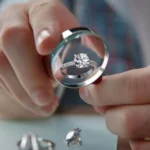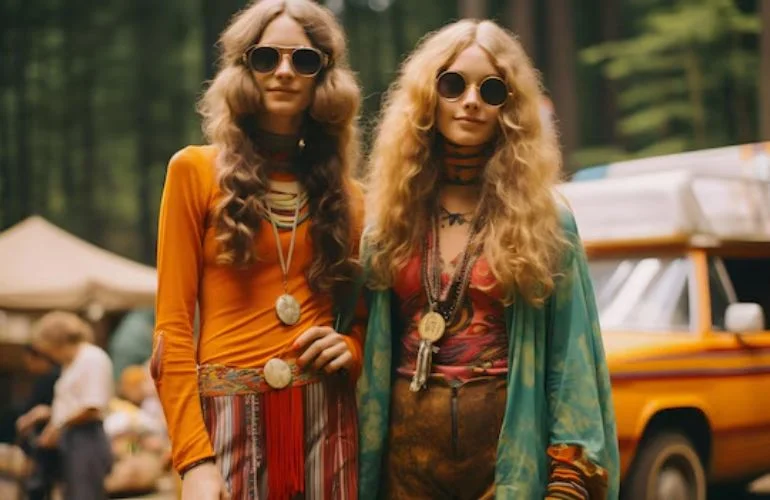When we think about 60’s fashion, the first thing that comes to mind is often the hippie movement. During this era, fashion wasn’t just about looking good; it was a reflection of a cultural revolution. The 60’s fashion trends hippies embraced were bold, colorful, and full of meaning. From tie-dye shirts to bell-bottom pants, these styles became a symbol of peace, love, and freedom. In this post, we will dive into the groovy world of hippie fashion and how it shaped the decade.
The Birth of Hippie Fashion
The 1960s was a time of significant social change, and the hippie movement played a major role in it. As young people rejected the traditional values of their parents, they also began to rebel against mainstream fashion. Instead of following strict dress codes, hippies opted for a more relaxed and natural look. The styles they adopted were often inspired by the bohemian and folk culture. Clothes became a form of self-expression, with many items being handmade or customized.
Must read Japanese Beauty Standards
Key Elements of 60’s Fashion Trends Hippies
Tie-Dye Everything
One of the most recognizable trends from the 60’s hippie fashion is tie-dye. This colorful design was more than just a fun craft project. It represented the vibrant and carefree lifestyle of the time. Whether on t-shirts, dresses, or even pants, tie-dye patterns could be found everywhere. The DIY nature of tie-dye also allowed people to create their own unique designs, adding a personal touch to their wardrobe.
Bell-Bottom Pants
Another iconic part of 60’s fashion trends hippies loved was bell-bottom pants. These pants flared out at the bottom, giving them a fun and flowy look. Bell-bottoms were often worn with loose-fitting tops and sandals, creating a laid-back vibe. They were also practical, providing comfort for those attending outdoor music festivals or marches.
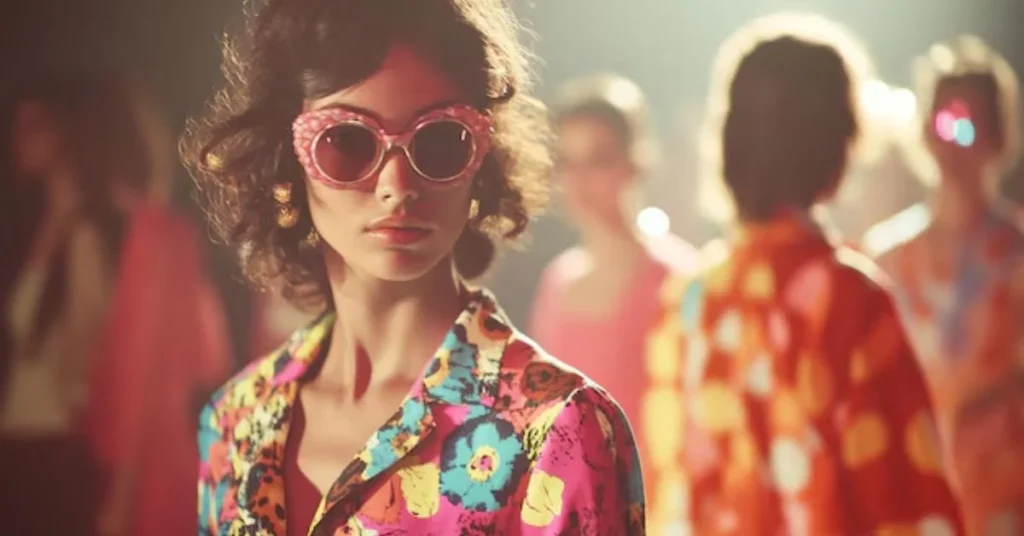
Fringe and Suede
Hippies were known for embracing natural materials like leather and suede. One of the standout trends was fringe, which was often found on jackets, vests, and bags. The flowing fringe was not only fashionable but also added movement to the clothing, which was perfect for dancing and expressing freedom. Suede, a soft material made from animal hide, was often used in jackets, skirts, and boots, giving outfits a more earthy and rustic feel.
Floral Patterns
As hippies promoted peace and love, their clothing choices often reflected these ideals. Floral patterns became a popular choice, symbolizing nature, growth, and harmony. Whether on dresses, blouses, or headbands, flowers were everywhere during the 60’s. This trend became a key part of the “flower power” movement, which encouraged peace and non-violence.
Headbands and Accessories
Hippie fashion wasn’t complete without the right accessories. Headbands, in particular, were a major trend during the 60’s. They were often made from fabric or leather and worn across the forehead. The headband trend was both a practical and stylish choice, as it kept long hair out of the face while also adding a touch of bohemian flair. Other accessories, like long beaded necklaces and peace sign jewelry, helped complete the hippie look.
The Influence of Music and Festivals on Hippie Fashion
Music festivals played a huge role in spreading hippie fashion. Events like Woodstock, held in 1969, became a showcase for the latest trends. Musicians like Janis Joplin and Jimi Hendrix were not only influential in the music world but also became fashion icons. Their unique styles—featuring bold colors, layered clothing, and statement accessories—inspired many young people to adopt the hippie fashion.
Festivals allowed people to experiment with their clothing, often wearing outfits that were comfortable and expressive. This casual approach to fashion became a defining feature of the hippie movement.
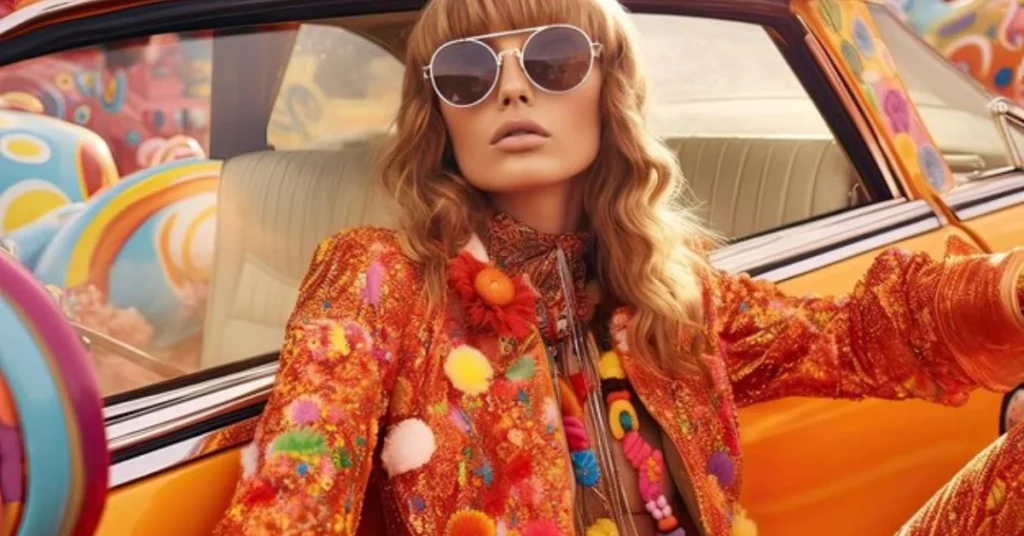
The Political Statement Behind Hippie Fashion
Hippie fashion was not just about looking good; it was about making a statement. Many of the 60’s fashion trends hippies embraced were a form of rebellion against the conservative norms of the time. For example, wearing second-hand clothes or handmade items was a way to reject consumerism and the corporate fashion industry. The use of natural fabrics and simple designs reflected a desire to live in harmony with nature and reduce waste.
In addition, many hippies used fashion to express their support for social causes. Peace signs, protest buttons, and anti-war slogans were often incorporated into their clothing, sending a clear message about their beliefs.
The Lasting Legacy of 60’s Hippie Fashion
Though the 1960s have long passed, the influence of hippie fashion is still present in today’s trends. Modern-day bohemian or “boho” style takes inspiration from the free-spirited looks of the 60’s. Flowy dresses, fringe details, and earthy accessories continue to be popular, especially at festivals like Coachella.
Even outside of fashion, the hippie movement has had a lasting impact on society, encouraging individuality, freedom of expression, and environmental awareness.
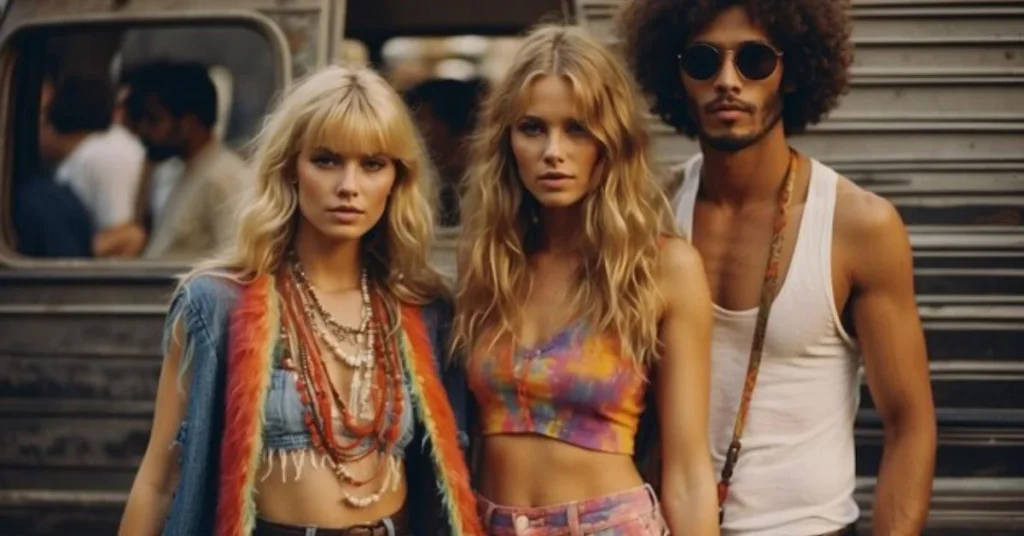
Conclusion
The 60’s fashion trends hippies embraced were more than just clothing choices—they were a reflection of a cultural revolution. With their bold colors, natural materials, and free-flowing designs, hippies used fashion to express their beliefs and values. Today, we still see the lasting influence of this iconic era in modern bohemian styles. Whether it’s tie-dye shirts or bell-bottom pants, the spirit of the 60’s continues to inspire new generations.
For more insights into 60’s fashion and its impact on modern styles, check out this site.
What were the most iconic 60’s fashion trends hippies?
The most iconic trends included tie-dye, bell-bottom pants, fringe jackets, and floral patterns. Headbands and other bohemian accessories were also widely popular.
Why did hippies wear bell-bottom pants?
Bell-bottoms were not only stylish but also practical. They were comfortable for festivals and outdoor events, aligning with the relaxed and free-spirited nature of the hippie movement.
How did music influence 60’s fashion trends hippies?
Music and fashion were closely connected during the 60’s. Musicians like Janis Joplin and Jimi Hendrix set fashion trends, and music festivals like Woodstock showcased the latest styles.
What was the political significance of hippie fashion?
Hippie fashion often rejected mainstream consumerism and supported environmental causes. Wearing second-hand or handmade clothing was a way to promote anti-materialism and peace.
Is hippie fashion still relevant today?
Yes, modern fashion continues to draw inspiration from the bohemian styles of the 60’s. Festivals like Coachella often feature fashion that mirrors the hippie look, with flowing dresses, fringe, and earthy accessories.





